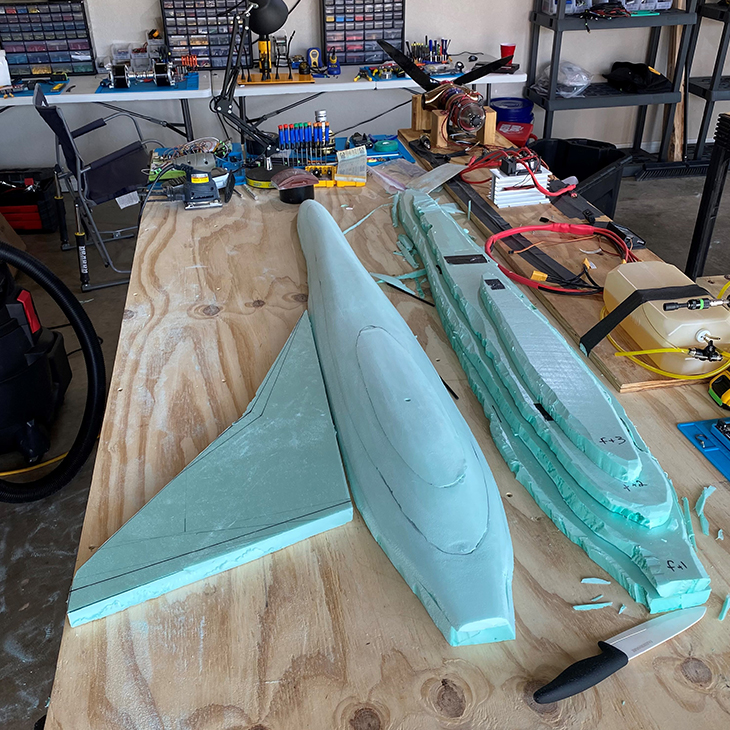
Project Boom: CEAT students join global partners in effort to create unmanned aircraft capable of breaking sound barrier
Tuesday, November 24, 2020
A group of student researchers from Oklahoma State University's College of Engineering, Architecture and Technology (CEAT) is partnering with a team of students from around the world looking to break the sound barrier with an unmanned aircraft.
The ambitious project, aptly named Project Boom, includes nearly a dozen current and former CEAT students. They are part of an approximately 200-member team spanning the globe that is working on designing, building and piloting the aircraft.
Cole Replogle, a recent OSU graduate and current University of Cambridge graduate student, is chief engineer for the project. He helped form the project with a family friend.
“We sat down and tried to figure out if it was even possible to build an unmanned aircraft capable of breaking the sound barrier,” he said. “We found out that maybe it was, which was good enough for us, so we began moving forward with the project.”
Replogle recruited peers he met at OSU who have since become integral members of the team. Johnathan Burgess, the aerodynamics lead for the team and recent CEAT graduate, jumped at the opportunity.

“This is a project that I couldn’t let pass by,” Burgess said. “Being a part of this project is a once-in-a-lifetime opportunity.”
The team began by constructing the engine test platform, which it documented on the social media site Reddit, and the rest, as they say, is history. Seemingly overnight, the small team began receiving requests from students around the world who wanted to get involved. They quickly decided they would turn nobody away.
“We wanted everyone who wanted to volunteer their time to have the opportunity to work on the project,” Replogle said.
To date, the team has an engine and is currently working on procuring materials to construct the airframe. The team’s goals are two-fold. First up is breaking the Guinness World Record for fastest unmanned aircraft, currently 450 miles per hour. If all goes according to plan, Project Boom plans to attempt a new record early next summer.
Next up, the team hopes to break the sound barrier. The closer they get to supersonic flight, the more challenges they envision facing.
“A person could earn a Ph.D. studying the effects of the transonic regime (the sector of flight as speeds near the sound barrier) on all phases of flight,” Burgess said. “There are so many variables we’ll have to take into consideration the closer we get to breaking the sound barrier.”
Replogle hopes as the team reaches and documents more milestones sponsors will commit to funding the next phases.
“I’ve been really surprised at the level of support we’ve gotten for the project from people in industry,” he said. “From software to capital for the purchase of an engine, we’ve been very pleased with the support we’ve gotten so far and hope that our successes encourage others to help with the project.”
MEDIA CONTACT: Jeff Hopper | CEAT Marketing | 405-744-2745 | jeff.hopper@okstate.edu
